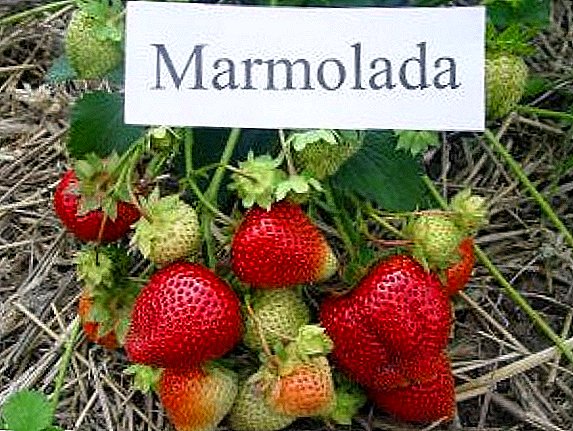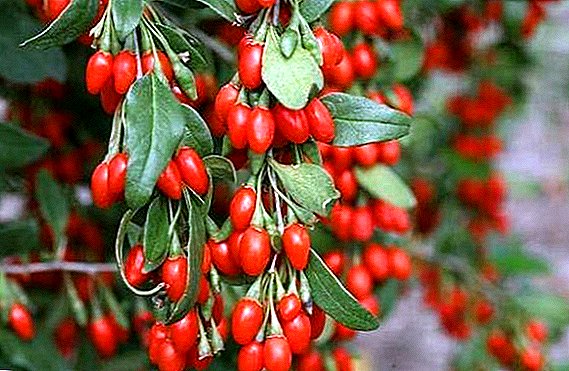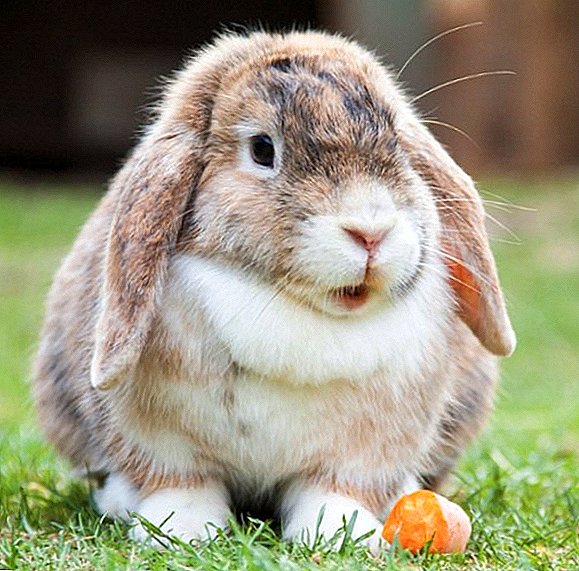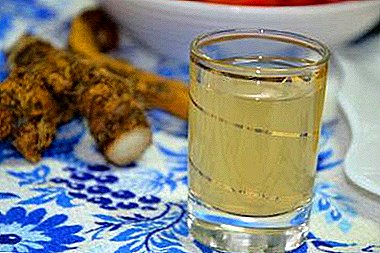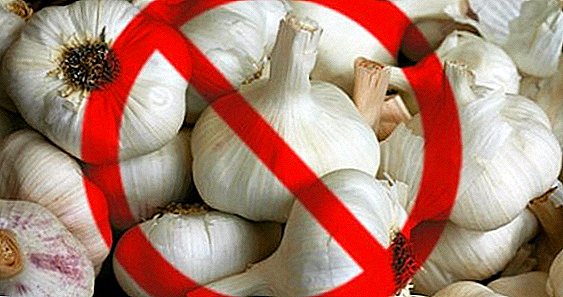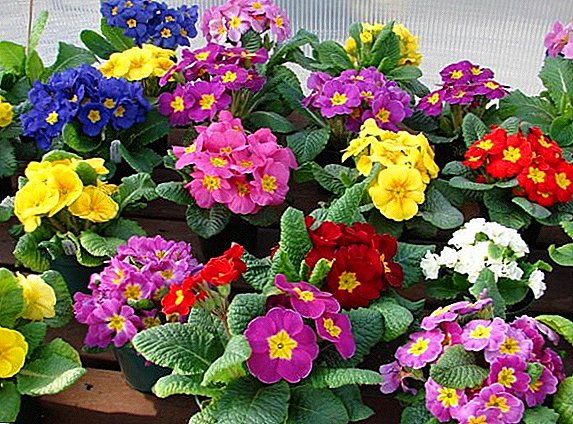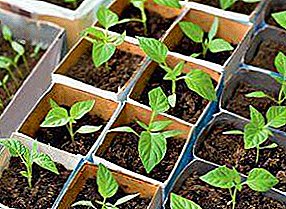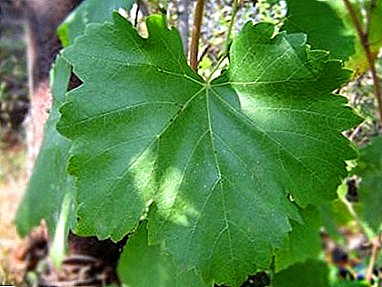
Grapes Laura or Flora - is one of the most beloved table varieties, which is distinguished by high yield and remarkable taste of berries with a slight touch of nutmeg.
The exceptional properties of the variety are quite long shelf life after harvest, good transportability and long-term preservation directly on the bushes.
What kind is it?
Laura is a table seed seed of pale green color.. From above berries are covered with white pruine.
Table varieties also include Dubovskiy pink, Karmakod and Lily of the Valley.
Laura grapes: description of the variety
 Shoots have an average growth rate, medium sized bushes. The volume of fruitful shoots from 60 to 80% of the total.
Shoots have an average growth rate, medium sized bushes. The volume of fruitful shoots from 60 to 80% of the total.
Clusters of conical shape, weight on average more than 1 kg, maximum - up to 2.5 kg. In length reach 40 cm. Density can be loose or medium.
The quality of pollination of flowers and the strength of the plant as a whole have a serious impact on the density and mass of the clusters. On a bush, practically identical clusters usually develop, differing little from each other in size and weight.
The leaves are not pronounced five-lobed form, the ends are cut, the color of the outer surface is dark green.
The berries are oval, oblong or cylindrical, the weight of each varies from 7 to 10 g. In length reach 3-4 cm.
The size can increase in the presence of a tall stock, which reduces the taste properties and increases the ripening period. Berry is well attached to the stem, does not fall for a long time.
The flesh is crispy, strong. It has a pleasant taste with a hint of nutmeg, and is balanced between acid and sugar content. The amount of sugar - from 20%, acid - 6-8 g per liter.
The sweetness of the fruit decreases with high humidity of the soil and air, especially against the background of cool weather, as well as with the presence of a tall stock. Seeds are large and hard.
Breeding history and breeding region
Laura - the brainchild of IVI behalf V.E. Tairovalocated in Odessa. Composite hybrid, Husayne, Muscat de Saint Valle, Queen of Tairov, Muscat of Hamburg (a mixture of pollen) participated in the crossing.
In the Ukrainian State Register listed under Flora.
Among the hybrids it is worth noting such varieties as Gordey, Rumba, Valek and Timur.
A photo
Photo grapes "Laura":



Characteristics, ripening and pollinators
When do Laura grapes ripen and bear fruit? The ripening period for Laura grapes is early, ranging from 110 to 120 days from the moment of ovary formation.
Kishmish 342, Julian and Muscat are also white.
Pollinators for Laura grapes are male varieties of varieties such as: Arcadia, Kishmish radiant, Rusbol, because Laura is considered a functional female variety.
Laura grape is a high-yielding variety, which begins to bear fruit after a couple of years from the moment of planting. With one adult bush you can get over 40 kg of berries. A large load on the shrub reduces the taste properties of the fruit.
After ripening, grape berries are able not to fall off for a long time, they remain on the vines. With long-term preservation on the bushes occurs the drying of the berries.
Resistance to cold is good enough, Flora can withstand up to 22-23 ° frost.
A special feature is the good tolerability of gibberelin, which is used for sultanas. At Laura, under his influence, the berries are lengthened and practically lose their seeds.
Laura is characterized by innate resistance to gray rot attack, against mildew resistance is estimated at 3 points. From oidium is not protected.
Not prone to cracking berries. Ripens amicably. Remarkably combined with stocks, prefers tall. Cuttings root quickly and easily.
Planting, growing and care
 What actions are required from the husbandman to Laura caressed him with his love?
What actions are required from the husbandman to Laura caressed him with his love?
- Landing.
Soil with a high content of clay and salts, as well as with groundwater located near the surface, is not suitable. The depth of their occurrence must be
more than 1 m.Lora variety is best developed in the southern regions. When grown in the North and Central regions of the grapes should be placed in areas richly lit by the rays of the sun and protected from drafts. It is best to have a vineyard near high fences or walls. This place should be illuminated all day by the sun.
In the South, landing is carried out, starting in October and ending in March, in cold areas - in the spring, after a steady rise in temperature to 16-17 °.
Laura is planted with grafted cuttings or saplings according to the scheme 1.5 × 1.5, retreat from the fence to a distance of at least 50 cm. Mix the planting soil with dry mineral fertilizers containing potassium, nitrogen, phosphorus.
- Watering.
Mandatory, regular and permanent. In hot weather, the amount of watering and the volume of water increase, in wet and cool do not water at all. The young bush on average requires 3 buckets of water for each watering, an adult - 6 buckets.
It is recommended to irrigate not under a bush, but into prepared drainage pits. They dig up the diameter of the bush, stepping back two feet from the base. This is due to the peculiarities of the root system, which cannot absorb water directly under the bole.
In the spring and autumn, the earth is mulched to preserve moisture inside. Recycled compost is great. For the summer, mulch is removed so that the roots do not mate.
- Top dressing.
Regularly, but in low concentrations. Laura needs trace elements - phosphorus, magnesium, potassium and nitrogen.
- Pruning.
The first 2-3 years of life Lora bush is not pruned. Subsequently, the procedure is carried out every autumn. Cuts off all damaged, dried and suspicious shoots, as well as overgrown.
In general, it is recommended to leave 3-4 main escapes, they will eventually begin to thicken and grow. Do not get carried away with pruning - Laura reacts poorly to this and stops developing for a long time.
On one mature shrub up to 50 clusters are allowed, but such an amount will make the berries and the clusters grind. The optimal amount is 24-28 clusters. They are formed from angular eyes on the shoots.
Trimming is possible medium or short.
- Preparing for the winter.
It is necessary to cover Laura if the temperature in winter drops below 15 °. Young bushes can be covered with soil, and more mature ones can be covered with hay, straw or mulch. Do not use airborne materials.

Isabella, Crystal and Marcelo also require mandatory shelter for the winter.
Diseases and pests
The variety Laura is not at all susceptible to gray rot, mildew is rarely affected, as it is highly resistant against it.
The main danger is oidium, against which Laura has no immunity at all. To avoid infection, produce regular processing by various means.
Against oidium and some other fungal diseases use:
- Sulfur preparations. You can spray the bushes with liquid colloid or pollinate with a ground powder;
- A solution of potassium permanganate of average concentration. It should be painted in a nice pink color;
- Mullein infusion;
- Chemicals - Topsin M, Caratan, Rubigan, Bayleton.
At the same time, it is possible to carry out prophylaxis against mildew using a Bordeaux mixture, iron vitriol and nitrafen.
Do not forget about the prevention of such common grape diseases as chlorosis, bacteriosis, rubella, anthracnose and bacterial cancer. Detailed information on this is presented in separate articles of our site.
 High sugar content actively attracts os.
High sugar content actively attracts os.
Therefore, Laura must be protected from their attacks using nets. To wrap every bunch, have patience.
Not far from the vineyard, traps and baits can be laid out, using boric acid and organophosphorus agents such as dichlorvos and karbofos as a poisoning agent.
Among other harmful insects that prefer to eat Laura, you can find Leafbirds, weevils, mining moles, herbivorous mites, goldfish, mosquitoes, flea beetles, mealybugs and thrips.
Some species of birds are not at all eager to feast on delicious juicy Laura berries, therefore it is recommended to cover ripe grapes with nets of polymeric materials or flexible metal.
Tasty berries, a large amount of harvest, not complicated care, low demands on growing conditions, resistance to cold - all these qualities make Laura one of the most beloved varieties, both in experienced and novice growers.
Velika, Krasa Balka and Ataman can also boast a special taste.




